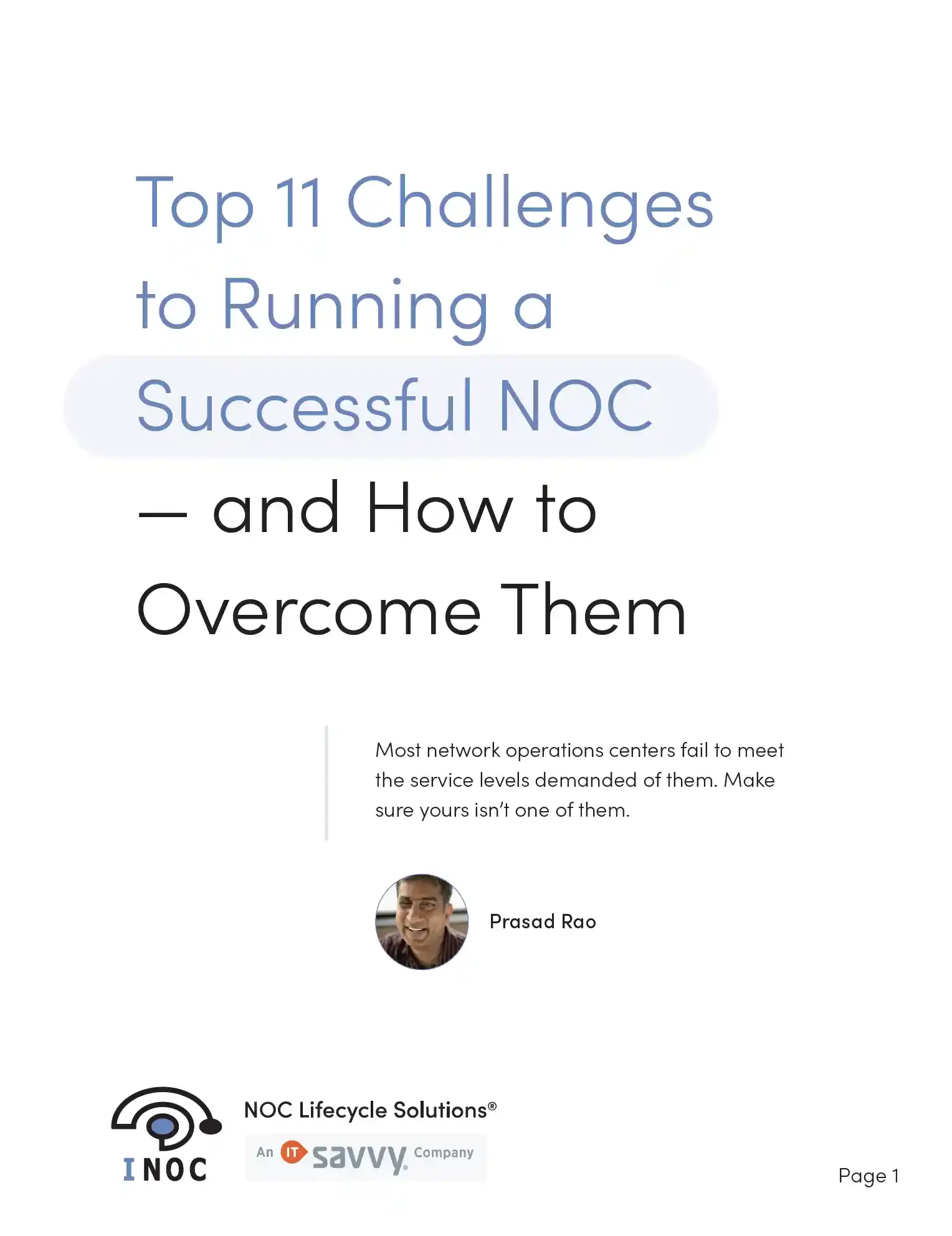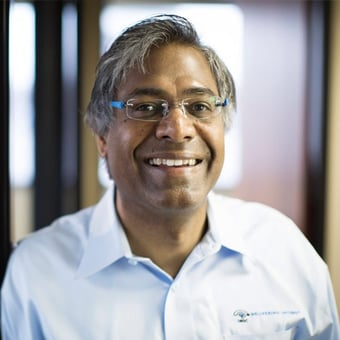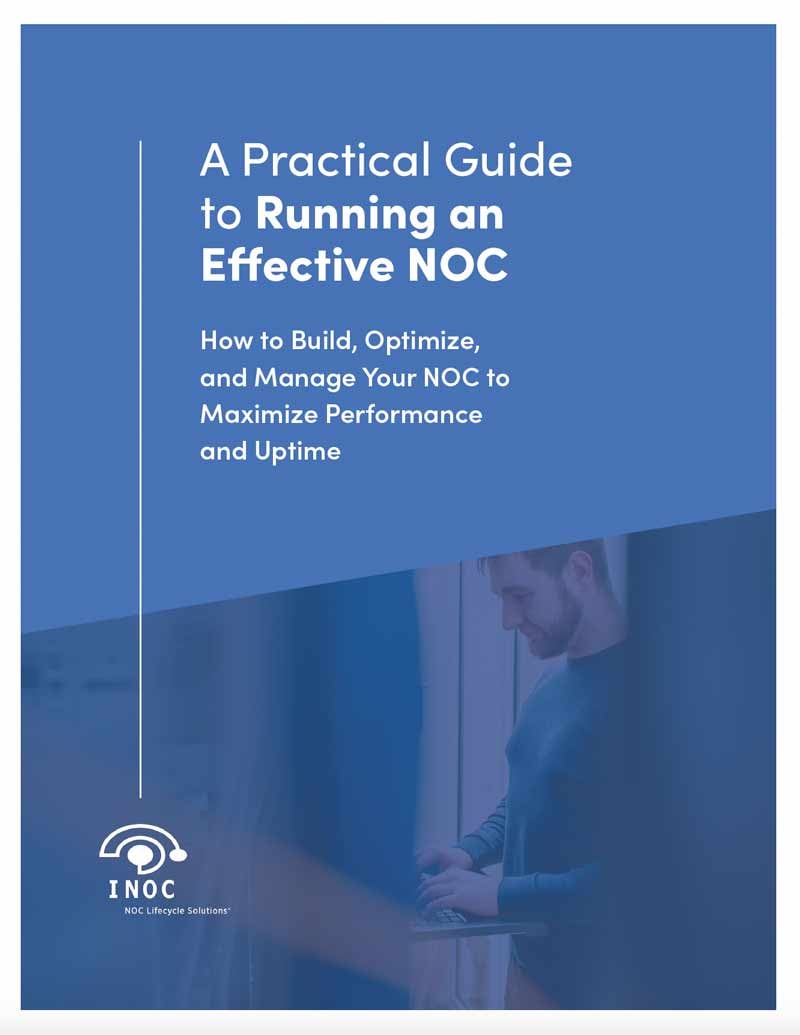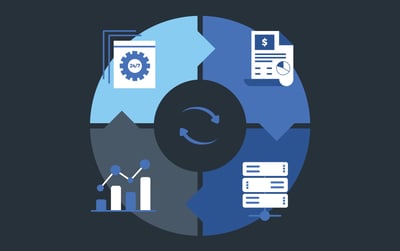In case your time is short
- Outsourcing gives you instant access to NOC experts who've seen it all before, sparing you the headaches of building these capabilities from scratch.
- Most companies are shocked when they run the numbers — in-house NOCs typically cost way more than outsourcing when you factor in everything from staffing to technology.
- Building an in-house NOC is a marathon, not a sprint — expect 4-6 months minimum before you're up and running, with years to reach maturity. Outsourcing? Just a few weeks.
- Want advanced tech like AIOps without breaking the bank? Outsourcing lets you leverage sophisticated platforms without massive upfront investments.
- Great outsourced providers don't just meet SLAs — they offer transparency and meaningful metrics that actually tell you something useful about your network performance.
If you're here, you're probably considering one of the core questions in ITSM: should we build our own NOC or outsource it?
For companies with substantial IT infrastructures, it's a make-or-break decision. And while conventional wisdom might whisper "keep control, build in-house," I've watched that thinking shift dramatically over the years.
The control and assurance once afforded by keeping the NOC in-house have largely been upstaged by third-party service providers that have bridged those gaps and developed platform capabilities that simply wouldn’t be viable in-house investments due to low utilization. In other words, today's top-tier outsourced NOC partners offer all the control you need while bringing some serious advantages to the table.
Let me walk you through what you should really be considering in 2025.
1. Operational Maturity and Access to Expertise
The expertise gap is wider than you might think. Building a high-performing NOC requires specialized know-how that simply doesn't make sense for most teams that need a support operation to have in-house. And keeping NOC specialists who truly understand this domain is tough in today's job market.
I've seen countless teams underestimate this challenge and start in on greenfield NOC builds, only to resort to outsourcing after they've spent many thousands of dollars proving to themselves they weren't in a position to take on such a project.
What's even trickier is developing an operational framework that addresses all the quirks and challenges a NOC faces daily. Without this foundation, you're basically setting up a game of whack-a-mole with network issues—which, sadly, is what most NOCs still are today.
Here's what I've learned after decades in this business: high-performing NOCs aren't just about smart people and fancy tools. A look behind the curtain reveals a sophisticated governance structure that integrates back-office support teams and various tools and processes that unlock the efficiencies that have become increasingly necessary to meet desired service levels.
They rely on a battle-tested governance structure that seamlessly integrates support teams with finely-tuned processes. This level of operational maturity typically takes years to develop in-house, but you can tap into it immediately with the right outsourcing partner.
The advantage of "the structured NOC"A mature NOC runs like a well-oiled machine, with a tiered support structure ensuring issues are handled at just the right level. Tier 1 engineers should actually be resolving most incidents, keeping your senior experts free for the truly complex incidents.
In our NOC, which serves hundreds of customers 24x7, 60-80% of all incidents get efficiently managed by our Tier 1 team. That kind of optimization doesn't happen overnight with an in-house team — it's the result of years refining our operational framework. Most companies we talk to decide it's a better practical and business decision to simply connect to and inherit our structure whether than spending tons of CAPEX reinventing the wheel. |
Assumptions based on a partial understanding of challenges and opportunities can inadvertently hinder the NOC from the beginning. This can lead to immediate problems in network operations and create long-term difficulties, as operational limitations complicate and increase the cost of extending support to new services.
Ask yourself:
- Do we really have the expertise to spot and fix the root causes of NOC operational headaches?
- Can we build and maintain the operational framework a successful NOC needs?
- How long can we wait until our in-house NOC hits its stride, and what business risks are we carrying until then?

2. Relative Costs
When organizations run a genuine cost analysis, the results often raise eyebrows. Let's break down what you're really looking at.
Read our other guide for a more complete cost outlay of a new NOC build.
The people factorA proper 24/7/365 NOC needs at least 10-12 full-timers to ensure you're covered around the clock, accounting for time off, training, and the inevitable staff turnover. The math adds up quickly:
I've watched many organizations come to the realization that outsourced solutions deliver better service with a significantly lighter impact on the bottom line. It's simple economics — shared support models let providers distribute costs while maintaining quality. A plan that doesn’t consider this opportunity might, for example, call for a staff of 12 full-time employees, when in fact, the same or likely better support could be provided through an outsourced service solution that takes full advantage of an economy of scale to provide far better service at a far lower cost. |
The tech stack gets expensiveBuilding an in-house NOC requires quite a few tools that really only make financial and practical sense to actually procure and run if the NOC is fielding a lot of incident volume. Otherwise, all that CAPEX and ongoing OPEX goes to an operation that underutilized it relative to the costs. To be clear, the tools required for an effective NOC aren't cheap, and this is where many in-house projects start to derail:
Again, for most companies, these technologies end up significantly underutilized within a single organization's NOC. It's like buying a Ferrari to drive to the corner store once a week: hard to justify the investment. |
The hidden costs that nobody talks aboutThen there are all those costs that don't make it into the initial budget, often because they're off the radar of planners entirely:
When all the numbers hit the spreadsheet, I consistently see organizations discover that outsourcing slashes their total cost of ownership by 30-50% compared to the in-house route. That's real money you could be investing elsewhere in your business—ideally for revenue-generating projects. |
Ask yourself:
- Have we really tallied up all the staffing costs, including the less obvious ones?
- What's the true price tag on all the technologies we'll need?
- Are we accounting for the hidden costs that inevitably pop up—the known unknowns?
- How do these numbers stack up against outsourced solutions? Does it make more sense to cut the CAPEX and outsource with predictable OPEX instead?

3. Speed to Service
If you plan to build an in-house NOC, time will almost never be on your side. Most teams we talk to that are considering standing up an operation internally significantly underestimate how long it takes to build a fully operational in-house NOC.
The journey typically looks something like this:
|
Meanwhile, turning up support with an outsourced NOC partner can compress this timeline dramatically:
- Requirements gathering: 2-4 weeks to understand your environment.
- Onboarding: 4-8 weeks to integrate systems and processes.
- Full service: 6-12 weeks from kick-off to operation.
This accelerated timeline means you start realizing the benefits much faster, avoiding the long, painful learning curve of building these capabilities internally. I've seen this difference play out countless times, and it's rarely a close contest.
Ask Yourself:
- How quickly do we actually need these capabilities up and running?
- What's the cost of waiting a year or more for a fully mature in-house NOC?
- Can we afford the inevitable stumbles during the learning phase?

4. Technology That Actually Makes a Difference
Modern NOC operations aren't what they were even five years ago. Today, technologies like AIOps, machine learning, and automation aren't just nice-to-haves — they're essential for delivering the level of service your business demands. That only becomes more true with large supported environments.
Let's unpack that.
AIOps (machine learning + automation)Implementing effective AIOps isn't just about buying a platform — it requires specialized expertise beyond traditional NOC engineering skills. You need people who can select the right solution, implement it correctly, and continuously train and tune it to deliver meaningful results. Let me tell you, these people are hard to find and expensive to keep. Leading outsourced NOC providers like us have already made these investments and developed the expertise to maximize their value. Our platform offers capabilities that would cost most organizations a fortune to develop on their own:
|
Continuous innovationThe NOC technology landscape evolves at a breakneck pace. Keeping up requires constant investment and focus. This is literally all we do — our sole focus is staying at the cutting edge of NOC technology and operations. For most organizations, NOC technology is just one of countless priorities competing for attention and budget. The innovation gap between in-house and specialist providers grows wider every year. |
Ask yourself:
- Do we have the right people to implement and optimize advanced NOC technologies?
- Can we justify the investment these technologies require given our size?
- How will we keep our stack current as new innovations emerge?

5. Service Levels That Actually Mean Something
One area that often gets overlooked in this decision is the approach to service level management. This might sound dry, but it makes all the difference in the world to your actual experience.
Beyond the Basic SLAs
Most organizations fixate on standard SLAs like response time and availability. That's fine, but mature NOC operations go much deeper with objectives that provide meaningful insights:
|
These metrics tell you what's really happening with your network support, not just whether someone acknowledged a ticket within five minutes. Read our other guide for a deeper dive into the metrics all NOCs should be tracking—and using.
No more finger-pointing
One of the most frustrating aspects of managing network issues is the blame game. Sophisticated NOC providers establish clear accountability through detailed reporting that shows exactly where time is spent during incident resolution.
This transparency helps identify the real bottlenecks — whether they're in the NOC itself, with third-party vendors, or within your internal teams. New in-house NOCs typically struggle to provide this level of visibility, lacking the metrics framework and historical data needed to drive improvement.
Getting better every day
Mature NOC operations don't just maintain service levels; they systematically identify and address inefficiencies. Our formal continual service improvement processes ensure that service quality consistently increases over time, rather than plateauing after the initial implementation.
Ask yourself:
- Do we have a framework for measuring NOC performance beyond basic SLAs?
- How will we establish accountability across all the teams involved in incident resolution?
- What processes will ensure our NOC keeps improving month after month?
Finding Your Path Forward
While I've clearly laid out the advantages of outsourcing NOC operations for many organizations, the right choice ultimately depends on your specific situation. Here's when each approach might make sense:
|
When building in-house makes sense |
|
|
When building in-house makes sense |
|
The Bottom Line
I've been watching organizations make this decision for more than two decades now. The choice between building an in-house NOC or partnering with a specialist provider is one of those strategic decisions that reverberates through your organization for years.
By carefully weighing operational requirements, costs, implementation timelines, technology needs, and service level expectations, you can make a choice that aligns with where your business is heading.
While an in-house NOC might be the right call in specific situations, most organizations I work with find that outsourcing delivers a powerful combination of cost efficiency, expertise, advanced technology, and faster implementation. The right partner can deliver these benefits while maintaining all the control and visibility you require.
As you weigh your options, think beyond your immediate needs to how your requirements will evolve as your organization grows and technology continues to advance. The right decision now will position you for success as you maintain the performance and availability of your critical IT infrastructure in the years ahead.
.png?width=1273&height=450&name=imageonline-co-roundcorner%20(3).png)
Next Steps
Want to see how our approach to outsourced NOC support might fit your organization? Reach out for a conversation about your IT service strategy and NOC support needs, or grab our free white paper below for more insights.

Free white paper Top 11 Challenges to Running a Successful NOC — and How to Solve Them
Download our free white paper and learn how to overcome the top challenges in running a successful NOC.










-images-0.jpg?height=2000&name=ino-WP-NOCPerformanceMetrics-01%20(1)-images-0.jpg)








-images-0.jpg?width=200&height=259&name=ino-WP-NOCPerformanceMetrics-01%20(1)-images-0.jpg)